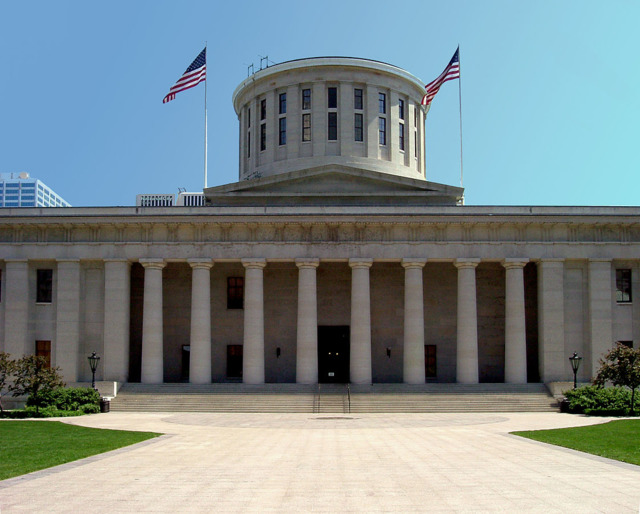The GOP members of the Ohio Redistricting Commission who voted for a slightly reworked version of old legislative maps say they did the best they could “under the circumstances.”
The Democratic members of the commission want the court to pick up the rejected plans of two independent mapdrawers instead, while rejecting the maps adopted at the end of March entirely.
Senate President Matt Huffman, the leader of the charge to tweak the third version of statehouse districts into the fourth version adopted March 28 by a 4-3 vote of the commission, joined with House Speaker Bob Cupp in demanding the Ohio Supreme Court avoid doing what map challengers and Democrats are asking for under separation of power regulations.
“This court has the power to invalidate a general assembly district plan adopted by the commission…but in doing so the court may not order the commission to adopt a particular district plan, may not draw a particular district, and shall not order ‘in any circumstance’ the implementation of any general assembly district plan that has not been approved by the commission,” attorneys for Huffman and Cupp stated.
The pair also told the court they shouldn’t be held in contempt for potentially ignoring its orders because “time simply ran out.”
“Auditor (Keith) Faber had numerous amendments he wanted to propose for the commission’s consideration (on the independent mapdrawers map),” attorneys for Huffman and Cupp wrote in their response. “There was no time for that. Other commission members needed time to verify information about the plan and analyze it. There was no time for that.”
Because of the time-crunched circumstances, the Republicans stated, the commission members couldn’t fully vet the brand new plan.
Democrats argue the same could be said for the plan that was eventually adopted that same night. They say they had no time to analyze or amend the map, as Huffman argued the plan had to be sent to the court and the Secretary of State’s Office hastily to meet the deadline.
Huffman said the map reworked from the third, rejected version would be more familiar to the commission, as it was “97%” the same as the old map, he said the night of March 28.
The legislative leaders also take time in their court filing to accuse the independent map-drawer that they chose, Dr. Douglas Johnson, of working with Democratic caucus staffers to finish the “independent map,” and discredit one of the maps altogether.
“If anything, the ‘independent’ senate plan was as much a product of the Democratic caucus as it was the independent mapdrawers,” attorneys for Huffman and Cupp wrote.
Thus, the map could not be seen as a “commission-drawn” map, they argue.
Secretary of State Frank LaRose submitted his own response to the map objections, standing by his fellow Republicans in saying the court did not have the power to adopt its own map.
“Nothing in Ohio law or its Constitution allows this court to adopt a redistricting plan that was not adopted by the commission,” LaRose’s attorney wrote in a court brief.
The state’s chief elections officer has spent months during this process imploring the commission and the court’s to come to an agreement for the sake of elections, most urgently the May 3 primary. In his court briefing, however, the secretary of state said “a constitutional crisis is not imminent,” and “there is still time for the commission to meet again.”
“More importantly, there is still time for the legislature to take steps to extend the time within which such a decision must be made,” LaRose said. “This court should not give up on the constitutional process even if the petitioners have.”
LaRose is part of a federal lawsuit that is asking a U.S. District Court to jump in and say the third version of maps, despite being rejected by the Ohio Supreme Court, could be used for the May primary. A three-judge panel declined to do that, giving the state until April 20 to come up with a map to be used during election seasons.
The secretary of state and his office have made it clear that without federal intervention, the May 3 primary will not include legislative races, and a second primary date, possibly August 2, will be needed.
In the court filing LaRose’s attorneys wrote in favor of the fourth map, the secretary says the federal judges “chose to give Ohio’s Constitutional process time to run its course.”
“This court should do the same,” the court filing states.
This story was originally published by the Ohio Capital Journal and is republished here with permission.
Stay connected with CityBeat. Subscribe to our newsletters, and follow us on Facebook, Instagram, Twitter, Google News, Apple News and Reddit.
Send CityBeat a news or story tip or submit a calendar event.




